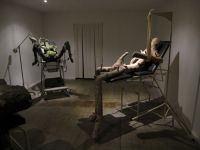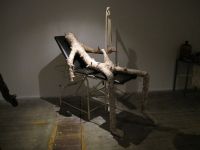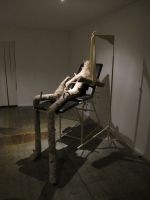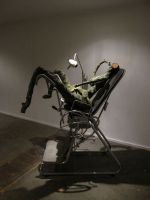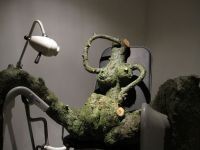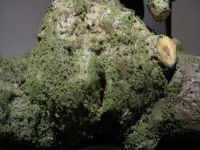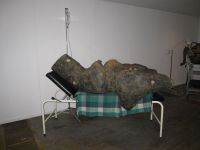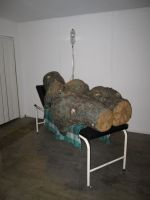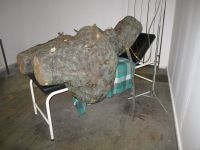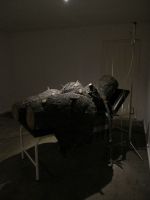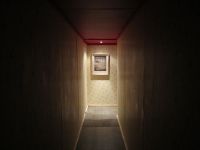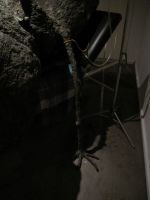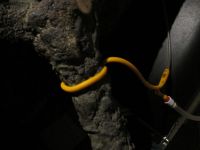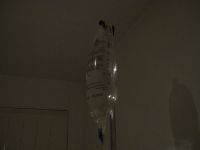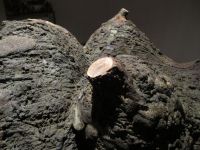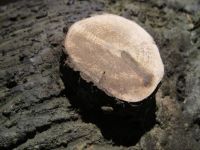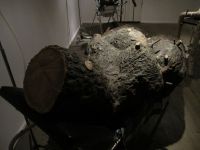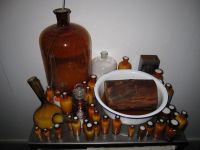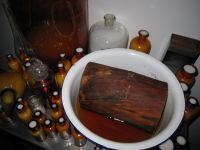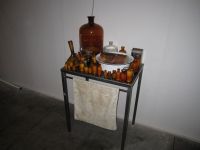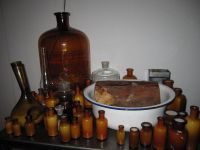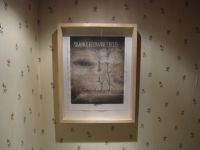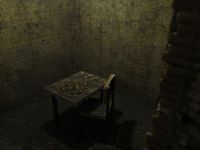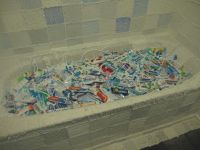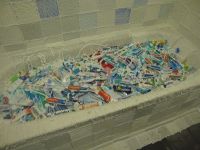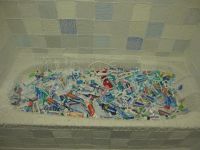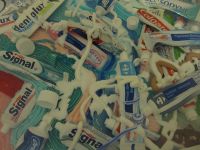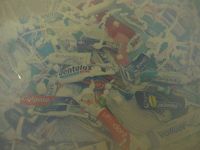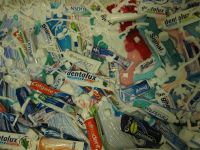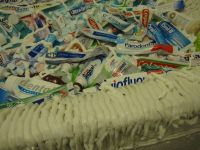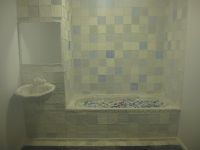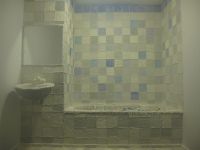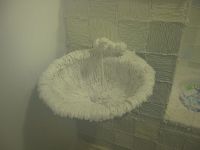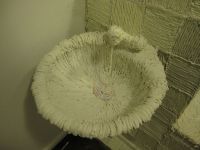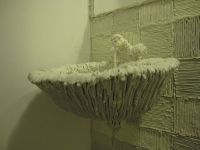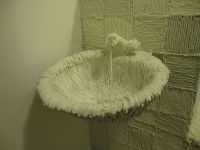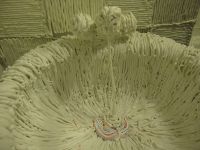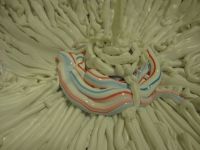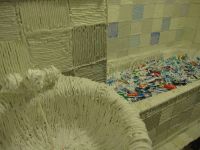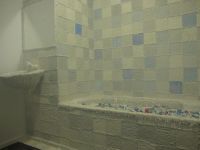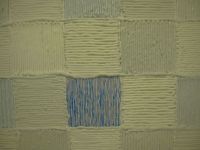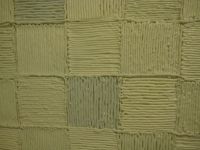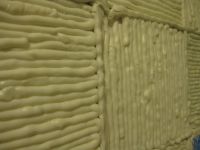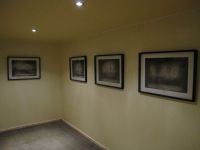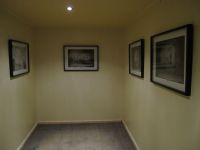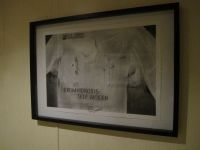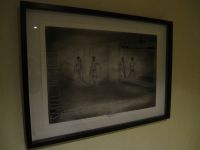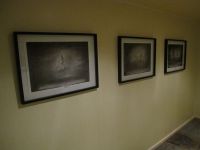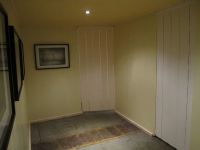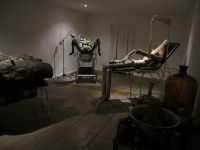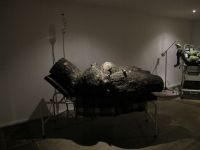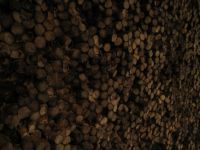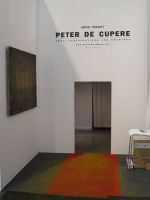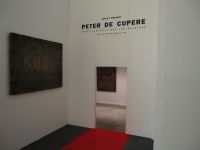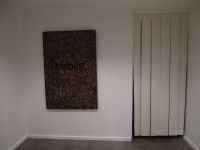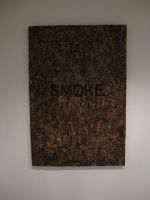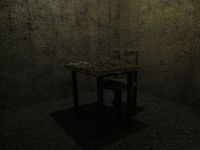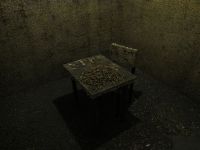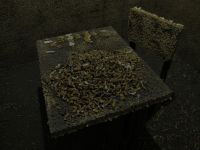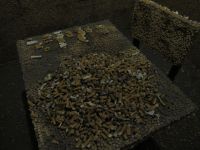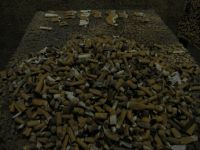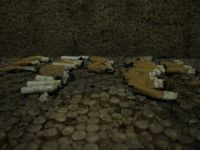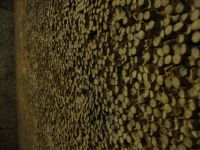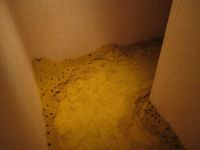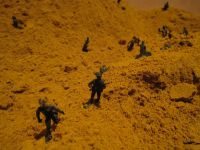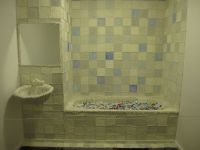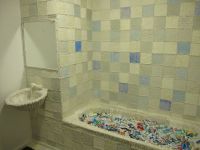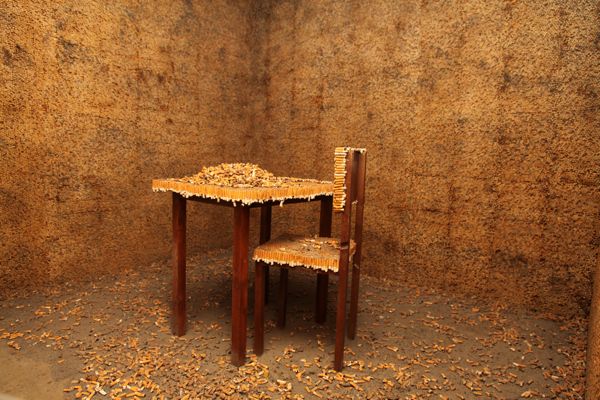
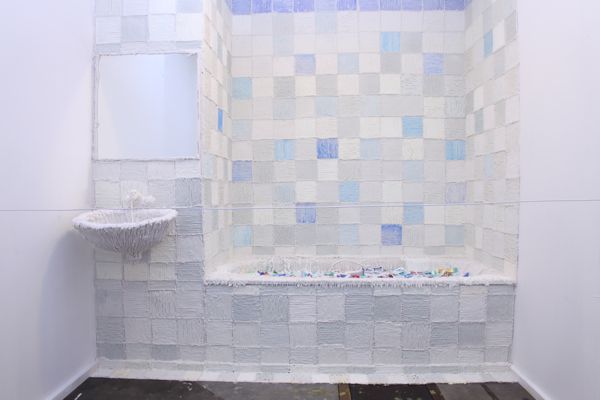
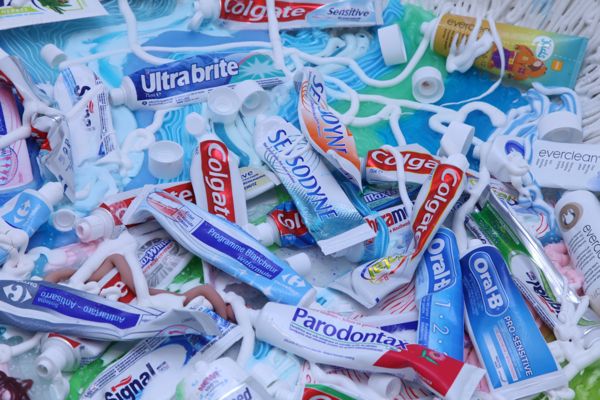
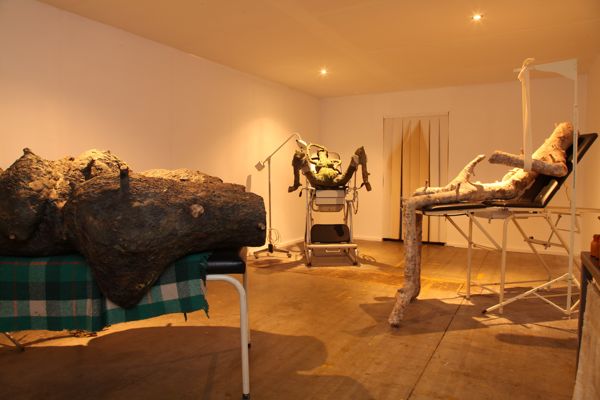
For the 4 th time in a row, Art Brussels invites upcoming and established artists to create a site specific art work for the fair. The visitor will discover ephemeral and large scale interventions by promising artists, all working and living in Belgium
The attentive Art Brussels visitor will be rewarded by the discovery of a smell installation by Peter De Cupere. Behind an ordinary door, next to the busy media booths, the visitor enters into a completely different environment. Via an intimate long corridor covered with retro wall paper, the visitors steps into two different rooms; a bathroom and a living room which are both filled with its opposite hardly bearable smells. Living the experiences of the intense odors might generate an activation of lost memories as in Prousts’ Madeleine scene.

A room made of more than 750.000 cigarette butts!

A bathroom covered with toothpaste and the intense fragrance of peppermint!
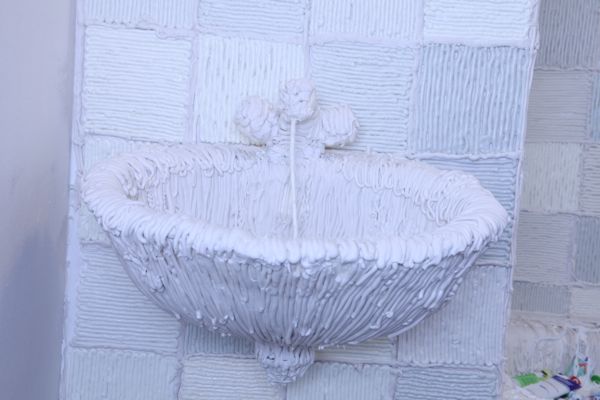


Three tree sculptures made of epoxy, but so realistic! The "Sick Trees"
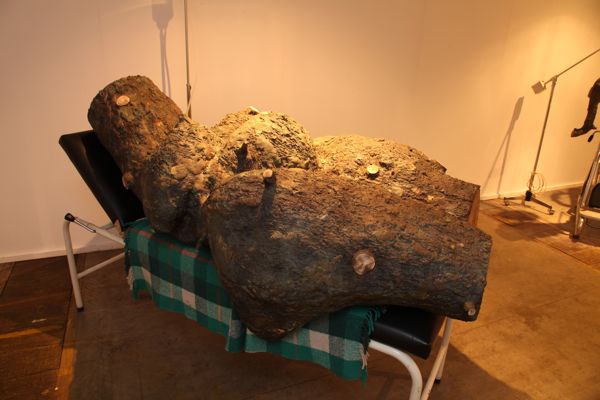
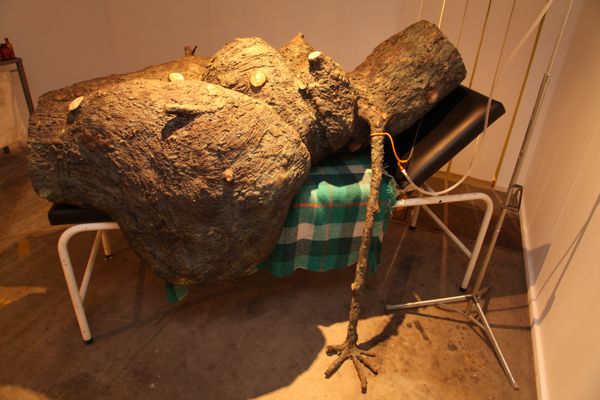
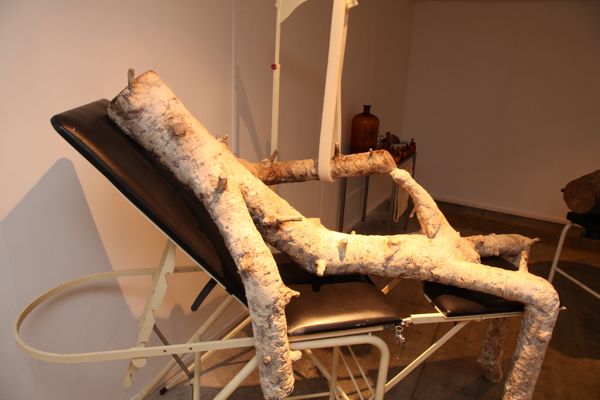
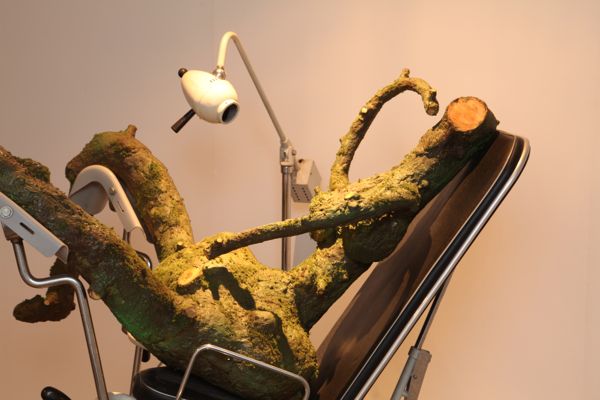
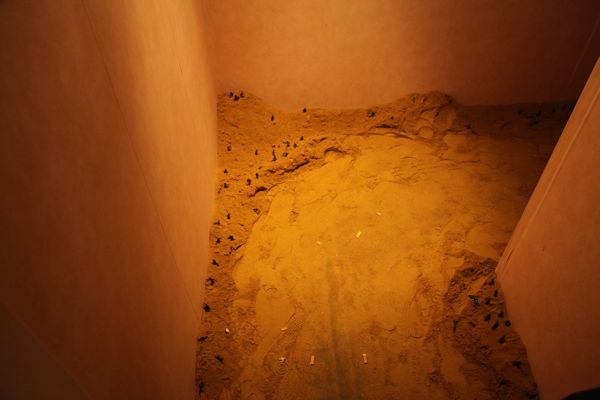
- > A 'Curry War' that fills your nose with the yellow smell of this gold powder.
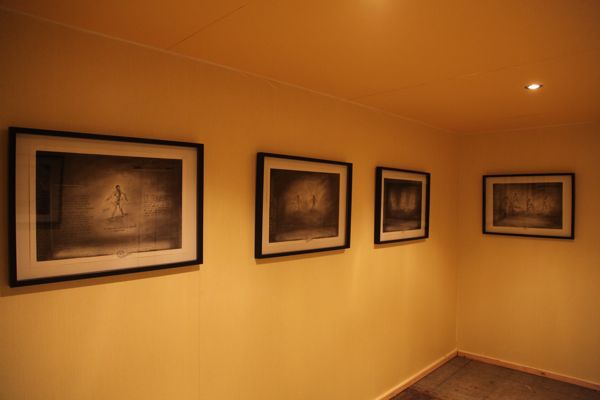
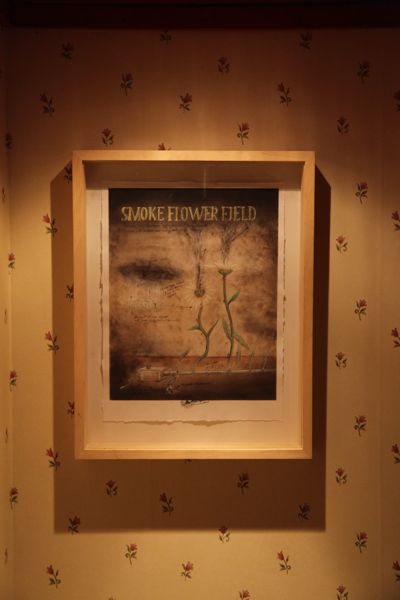
Some concept drawings about Smell-performances and Smell-installations.
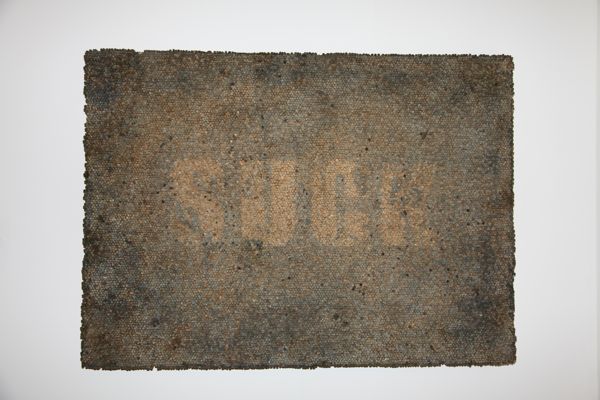
Cigarette paintings
More photos, click on read more...
FASTEN YOUR NOSTRILS
The exploration of the aesthetical potential of odors in the work of Peter De Cupere
Imagine a room with a thick layer of sweet smelling tobacco leaves on the floor, with food-experiments, fungi and spices everywhere you look and with two mouldy mattresses hung on the wall as if they were paintings of high pictorial quality. We are speaking of 1997, the year I first became acquainted with the work of the Belgian artist Peter De Cupere at an open-studio day at the Higher Institute for Fine Arts - HISK (still in Antwerp at the time). Upon entering the space, the visitors were treated to a sweet smell of fermentation and tobacco.
In the center of the space was set up “Fleur d’Anus” (Anus Blossom), a strange, grayish but elegant flower growing from an orange stool and nourished by the artist’s feces from a pot underneath it. Beauty and filth went hand-in-hand in this remarquable installation. The tone had been set. After a lifelong fascination for smell and two years of experimenting with the artistic qualities of it,
Peter De Cupere had decided to dedicate the rest of his days to the artistic
exploration of the aesthetical potential of odors.
The presence of smell in art had untill then been quite limited. As a concept smell allready appeared in two works of Marcel Duchamp (resp. in his urinoir “Fountain” (1917) and in “Air de Paris” (1919)), but it was only since the 1970ies – with a higher frequencity during the last 10 to 15 years – that smell started to appear as a medium sporadically in installations and performances. Why then would an artist decide to devote his whole oeuvre to a volatile medium as smell? Besides his personal love for odors since he was a child, De Cupere refers to the suppressed history of smell as one of his motivations behind his exceptional artistic practice. His aim is to convince us from the fact that, in contradiction to what philosophers have been adopting for centuries smell can be the source of a genuine aesthetic experience.
Smell works directly on our memories and emotions via our limbic system , only thereafter to be appropriated by a cognitive process, which makes smelling a very intuitive and associative act. Hidden herein is probably also the potential power of smell as an artistic medium: there where an unforeseen odor finds its way to our olfactory epithelium, we are thrown momentarily off balance, the effect of which can be emotional and disarming. Peter De Cupere has developed a masterful talent for creating and combining visual and olfactory elements which evoke forgotten memories or generate the most unexpected and memorable experiences. He knows how smells work from a scientific perspective and
experiments with every possible use of smells like a contemporary alchemist. From the most obscure, ‘malodorous’ smells to ‘heavenly’ scents and combinations of aromas are fired directly at our olfactory epithelium . His odorous material can vary from essences used in the composition of perfumes to aromas used in food, to odors that arise from diverse materials through experimentation—such as, for instance, food, abject substances, flowers, mould, plants, soaps, dirt, spices, etc.—or smells inherent to the materials used.
Though his creations are all related to smell in one way or another, De Cupere prefers not to be called a “smell-artist” but a “visual artist working with smells”,
referring to the fact that his work is much more than a collection of shapeless smelly experiments. He works magic with recognizable visual elements and thereby generates, in combination with scents, unanticipated synaesthesias between different sensual experiences.
Confronted with his scent-related sculptures, installations, objects, paintings, drawings, photographs, video’s, performances, graphic designs, scent-concerts, etc., we are encouraged to reposition our perception of smell in relation to other senses. A considerable portion of Peter De Cupere’s work floats on an undertone of socially critical reflections referring to the field of tension between nature and culture, representing a longing for pure olfactory sensations and a certain sadness due to the literal and figurative defilement of purely sensual—and primarily
olfactory—experience. Often covered with a subtle layer of humor and irony, his visually attractive works invite the public in a playfull way to let go of conventions and of culturally constructed or naturally grown resistance against unexpected confrontations with odors.
As an advocate for the use of odors in art, Peter De Cupere seems to prepare the path for future artists. In many different ways he invites or provoques the audience to reconsider their perception of smell, or to think about it at least. As a pioneer in his field, he didn’t exactly choose the easiest path one can think of, but we’re convinced it’s at least a very interesting and promising one which might open up new perspectives for smell in the field of contemporary art and beyond. Or as the American art-critics Larry Shiner and Julia Kristkovets have written in 2007: “Peter De Cupere has created an artistic identity that is a cross between artist and
olfactory chemist that may become a model for other olfactory artists in the future”.
Ruth Renders
Antwerp, 2010, text based on an longer essay written in 2008.
| < Prev | Next > |
|---|
